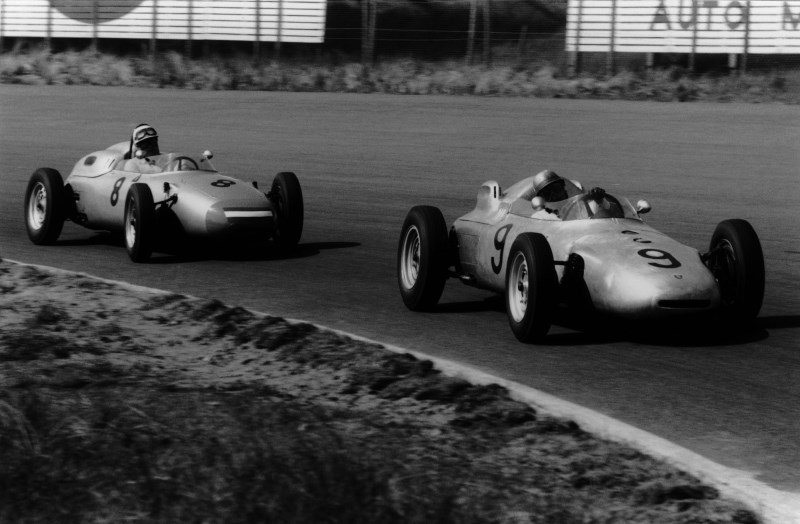In October 1958 the Fédération Internationale de l'Automobile (FIA) announced that for the 1961 Formula One season, engine capacity would be limited to the same 1.5 litres as in Formula Two (F2). This meant that Porsche could use their F2 cars almost unchanged in F1.
In 1959 Porsche unveiled the prototype of a narrow, open-wheel car called the Porsche 718/2 that married the 718 sport-racer's mechanicals with a more traditional single-seat Formula body. The unpainted car was entered in the 1959 Monaco Grand Prix, where driver Wolfgang von Trips qualified twelfth, but crashed on the second lap of the race. At Reims driver Joakim Bonnier finished third. For 1960 the production 718/2, starting with chassis number 718201, received revised bodywork, a 6-speed transaxle, and a wheelbase extended by 100 mm (3.9 in). A total of five cars were built. Some of these four-cylinder cars were later raced in F1 under the 1½ litre formula.
In 1961 Porsche launched the Type 787. Ferdinand Alexander "Butzi" Porsche, the founder's grandson, was involved in the design of what would become Porsche's first Formula One car. The car had a new chassis that was longer than that of the 718/2 by an additional 100 mm (3.9 in) to accommodate the Type 753 flat-eight engine that was then in development. The 787 would not get the eight-cylinder though, continuing with the air-cooled, DOHC four-cylinder Type 547 boxer engine that had been developed by Ernst Fuhrmann and that had powered the 550 Spyders and 718 series until then.




























